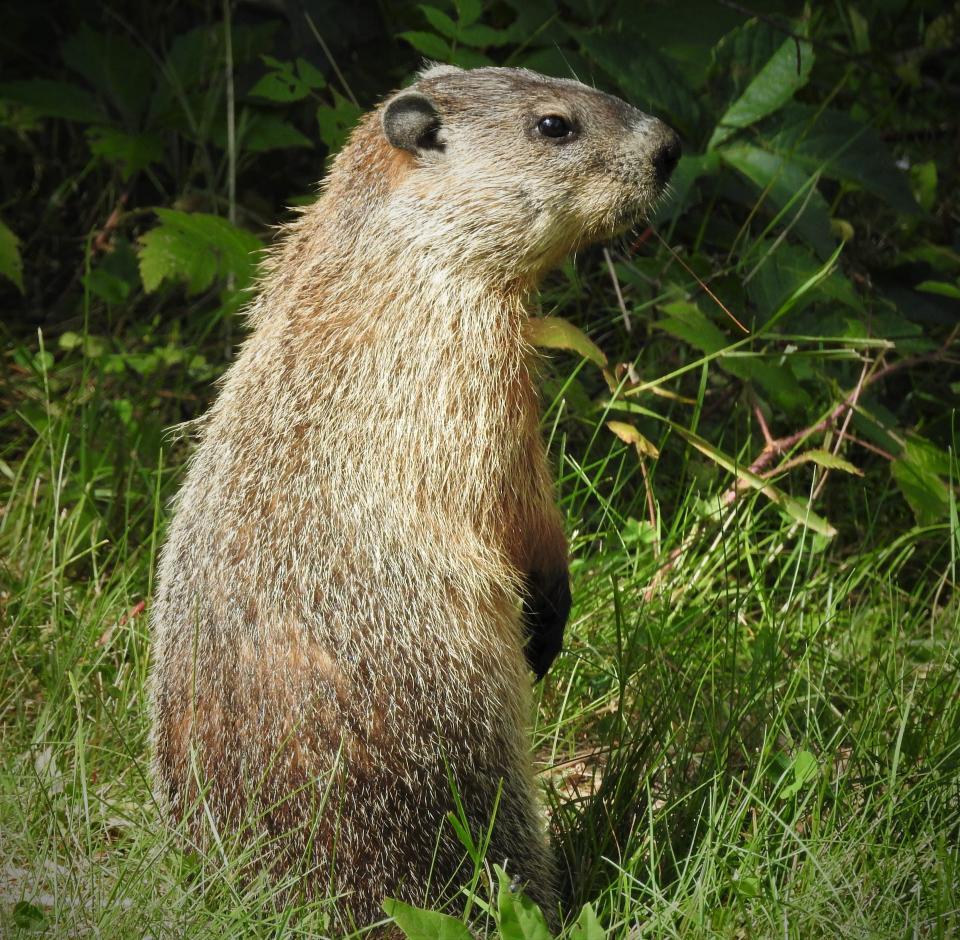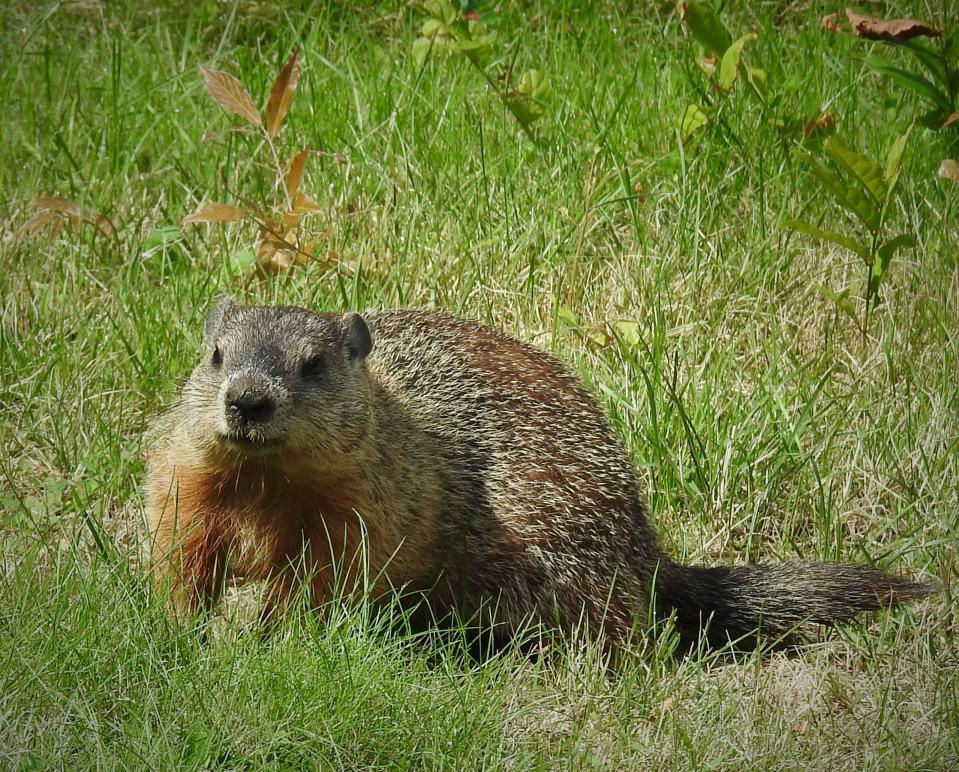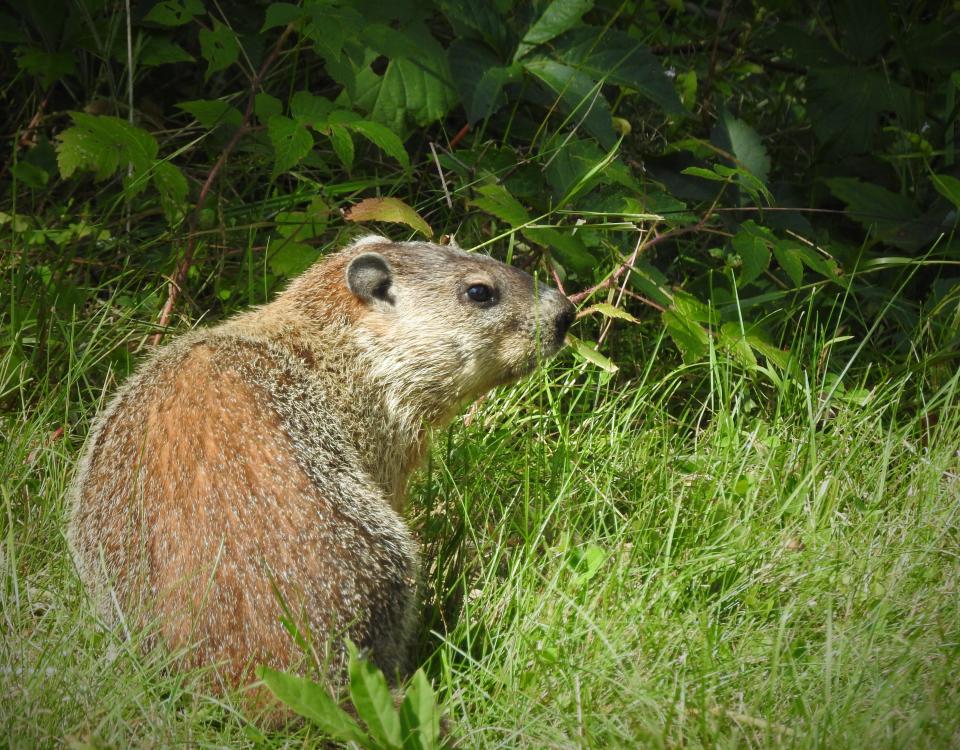Woodchucks are 'essentially giant ground squirrels' you learn to live with
When I lived out west and did a lot of hiking in the mountains, among my favorite animals were marmots. They would stand upright on the boulders of their rocky homes in high alpine meadows and whistle a warning when we got too close. They had a certain cache conferred by their rugged and exotic alpine homesteads. I was missing them recently, wondering when I would get a chance to encounter their cute, inquisitive faces and shrill whistles again.
More: Nature News: Rare northern blazing stars found in abundance on Maine's Kennebunk Plains
Turns out I have one (hopefully not more) in my backyard - a woodchuck! The woodchuck, a.k.a. groundhog, whistle pig (because of that piercing whistle), or more scientifically Marmota monax, has the widest distribution of any of the marmots in North America. I find it interesting that I am so enthralled with marmots, yet when I think of woodchucks my reaction is somewhat indifferent.

I have known woodchucks all of my life. As a kid, I remember my grandmother waging war, rifle in hand, with the woodchucks that plagued her New Jersey vegetable patch. Bored and forced to stare out the car window as my parents drove along the parkways of suburban New York, woodchucks were a frequent sight foraging in the clover-rich grassy areas along the roads. As an adult in New England I haven’t seen as many woodchucks, this area typically has so much ledge and thin soil that I don’t think there is much for them to burrow into. Now, settling into my North Berwick riverside property, I finally have found a woodchuck, or, rather, it has found my garden.
Belonging to the squirrel family
Woodchucks are essentially a giant ground squirrel. They belong to the squirrel family (Sciuridae) within the order Rodentia, and are the largest squirrel in New England! As both a squirrel and marmot-lover, this makes them extremely appealing to me. Unfortunately, this appeal is in direct conflict with the damage this woodchuck has done to my vegetable garden.

Woodchucks are animals built for burrowing. They have short, powerful legs, sharp claws, and fur-covered ears that help keep out dirt. They can get fairly huge - 2-feet-long and weighing around 10 pounds. We have great woodchuck habitat in our backyard -edge habitat containing both forest and meadow with fairly deep soil in spots.
More: Nature News: Kingfishers a harbinger of the halcyon days of summer
Woodchucks construct burrows that can be 3-feet-deep and up to 30-feet-long with multiple entrances. There is usually a conspicuous main entrance marked by large piles of dirt (sometimes called a porch) that surrounds it, with a variety of camouflaged bolt holes scattered about. I have never seen this, but woodchucks can also climb trees (usually to escape a predator) and can even swim!

How to keep woodchucks out of your garden
When the woodchuck ate all of my kale, pea shoots and tomatoes, my first reaction was to figure out how to get rid of it. My grandmother and her rifle sprang to mind, but I can’t do that. This is a wild animal with just as much a right to the woods and fields around my house as I have.
I looked into live trapping. But the problem with that is what to do if you actually catch a woodchuck. The University of Maine Cooperative Extension makes a compelling case against this practice. Live trapping and subsequent translocation ''involves releasing an animal far from its original home, into unknown areas. If the habitat is suitable for release, then other woodchucks may already live nearby. Woodchucks are territorial, and the territory owner is unlikely to tolerate an intruder. Thus, the new arrival must keep moving until it finds an unoccupied area. In the meantime, it lacks information about burrows and other safe refuges from predators. Furthermore, as it moves, it may encounter other hazards, including roads and vehicles, which lead to death. Releasing the animal onto someone else’s property requires permission, and it simply transfers the 'problem' to someone else." The Cooperative Extension instead recommends barriers and exclusion - perhaps more inconvenient for me but much better for my woodchuck neighbor.
More: Nature News: Elderberry hedgerow has benefits for humans and animals
Realizing I have an actual marmot, a giant among squirrels, living out back has made me realize, belatedly, that I want to learn more about woodchucks. While I intend to spend some time fortifying my vegetable garden against them, I hope to spend more time getting to know them. Perhaps I'll plant clover, plantain (which they love) and maybe enough blackberries and raspberries to share.

Susan Pike, a researcher and an environmental sciences and biology teacher at Dover High School, welcomes your ideas for future column topics. Send your photos and observations to spike3116@gmail.com. Read more of her Nature News columns online at Seacoastonline.com and pikes-hikes.com, and follow her on Instagram @pikeshikes.
This article originally appeared on Portsmouth Herald: Woodchucks, also known as a groundhog or whistle pig, are marmots

